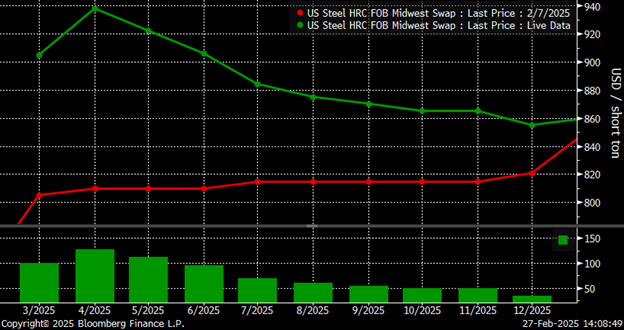Futures

Mark Novakovich joins Crunch Risk, Jack Marshall retiring
Written by Andre Marshall
April 2, 2024
Jack Marshall, a beloved member of the Crunch Risk team, has decided to retire.
Jack started his career on the CME floor in 1983, working as a clerk. He then became part of the Chicago origination/trading team in forex at Bank of America, where he worked for 23 years.
Jack joined me at Crunch Risk in 2013 and has been an integral member ever since. He was also instrumental in building out SMU’s coverage of steel and scrap futures.
Jack has built numerous close friendships in the steel and scrap industries, which he hopes to maintain. He is going to spend more time traveling with friends and family – including more time with his grandkids. We wish him the best in his next chapter!
With Jack retiring, Mark Novakovich is joining Crunch Risk effective April 2024. He has nearly 20 years’ experience working in physical and financial commodity markets in various roles – including risk management, logistics, and trading.
Most recently, Mark worked for S&P Global’s commodity division in sales and product development. He was responsible for creating price benchmarks and financially settled futures contracts.
Crunch Risk looks forward to having Mark as our new team member and we are excited for the expertise and perspective he brings to our clients.
Andre Marshall
Read more from Andre MarshallLatest in Futures

HR Futures: Market at crossroads after turbulent run
The market appears to be pausing after a turbulent run. But tension remains just beneath the surface. With net long positioning still elevated, sentiment-driven selling could quickly reignite volatility. Still, supply constraints and limited imports are laying the groundwork for a resilient physical market. This moment of calm feels more like a crossroads than a conclusion.

HR Futures: Traders’ views mixed as market navigates tariffs
A look at the HR futures market.

Market pressures trigger HR futures reversal
Market dynamics are shifting rapidly, with futures pricing diverging from physical fundamentals, creating a complex landscape for steel traders.

HR Futures: Correction in market after big rally
Another eventful week in the physical and financial steel markets is coming to a close, but with a markedly different tone than the last update at the end of February.

HR Futures: Market drifts lower on light volume
Over the past couple of weeks, Midwest HRC futures have been drifting lower on light volume. This begs the question if the rally has run out of steam, or is it catching its breath after ripping roughly $150 in less than two weeks? The April CME Midwest HRC future made an intraday high at $976 […]
